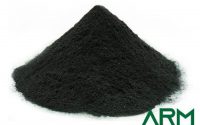How to Select Bucking Bar Materials
Introduction
Bucking bars are essential tools in riveting, providing the resistance needed to deform a rivet’s tail and secure it in place. These tools are widely used in industries such as aerospace, automotive, construction, and manufacturing. Choosing the right bucking bar involves understanding the materials, their uses, and how to maintain them. This guide provides an in-depth overview of these aspects.

1. Materials Used in Bucking Bars
The material of a bucking bar is crucial to its performance, durability, and suitability for specific tasks. The three most common materials used in bucking bars are tungsten, steel, and aluminum.
–Tungsten
Tungsten is an exceptionally dense material, making it ideal for heavy-duty and precision tasks.
Tungsten’s high density allows for smaller, more compact bucking bars that are easier to handle in confined spaces. It also excels in vibration absorption, which helps reduce operator fatigue. Additionally, tungsten is highly durable and resistant to wear and deformation, making it suitable for demanding applications.
Yet, it is significantly more expensive than other materials, which may be a limiting factor for budget-conscious projects. It is also brittle and can chip if dropped or mishandled.
Tungsten bucking bars are commonly used in aerospace and aviation for riveting tasks, particularly in confined spaces or when high precision is required. They are also ideal for heavy-duty projects demanding exceptional durability.

–Steel
Steel is the most commonly used material for bucking bars due to its affordability and versatility.
Steel is widely available and cost-effective, making it a popular choice for general-purpose riveting tasks. It is durable and comes in various shapes and sizes to suit different applications.
Steel is less dense than tungsten, meaning steel bucking bars must be larger to achieve the same performance. This can make them more cumbersome to use. Steel also transmits more vibration to the operator, which can lead to fatigue, and it is prone to rust and corrosion if not properly maintained.
Steel bucking bars are commonly used for general riveting tasks in construction, manufacturing, and automotive repair. They are also well-suited for projects where cost is a concern.
–Aluminum
Aluminum bucking bars are lightweight and easy to handle, making them ideal for specific applications.
Aluminum is significantly lighter than tungsten or steel, which reduces operator fatigue during repetitive tasks. It is also naturally resistant to rust and corrosion, making it suitable for outdoor or humid environments. Aluminum is easy to handle, especially for less experienced operators.
Aluminum’s lower density provides less resistance, limiting its effectiveness for heavy-duty tasks. It is also more prone to wear and deformation under high impact and is typically reserved for light-duty applications.
Aluminum bucking bars are ideal for lightweight riveting tasks, corrosion-prone environments, and portable applications where weight is a concern.
2. Applications of Bucking Bars
Bucking bars are used across various industries and for diverse applications:
- Aerospace: In the aerospace industry, bucking bars are critical for riveting during aircraft assembly. They are particularly useful in confined spaces, such as fuselages and wings, where compact tools like tungsten bars are preferred for their size and vibration-dampening properties.
- Automotive: In the automotive industry, bucking bars are used for riveting vehicle frames, panels, and other components. Steel bucking bars are commonly chosen for their durability and cost-effectiveness.
- Construction: In construction, bucking bars are used for riveting structural frameworks, bridges, and heavy machinery. Depending on the project’s size and scope, steel or aluminum bars may be used.
- Manufacturing: In manufacturing, bucking bars are used for riveting metal components in machinery, appliances, and industrial equipment. Custom-shaped bars are often employed for specialized assembly lines.
- DIY and Hobbyist Projects: For smaller-scale riveting tasks, such as assembling metal furniture or repairing tools, aluminum bucking bars are preferred due to their lightweight and ease of use.
3. Factors to Consider When Choosing a Bucking Bar
When selecting a bucking bar, consider the following factors as well:
- Material Requirements
Choose tungsten for heavy-duty or precision tasks, steel for general-purpose and cost-sensitive projects, and aluminum for lightweight or light-duty applications.
- Rivet Size and Material
Heavier bars, such as those made of tungsten, are better suited for larger rivets, while lighter bars, like aluminum, work well with smaller rivets.
- Workspace Constraints
Compact tungsten bars or angled and curved designs are ideal for tight or confined spaces. Flat bars are better for open and easily accessible areas.
- Ergonomics
Bucking bars with vibration-dampening properties, such as tungsten, help reduce fatigue during prolonged use. Bars with textured or ergonomic grips enhance handling and control.
- Budget
Steel provides an affordable solution for most general tasks, while tungsten offers unmatched performance for demanding applications despite its higher cost.
4. Maintenance and Care
Proper maintenance is essential to extend the lifespan and performance of bucking bars. Here are some tips:
– Cleaning: Clean the bar after each use to remove debris and residues.
– Inspection: Regularly check the bar for signs of wear, deformation, or damage.
– Storage: Store the bar in a dry, protected environment to prevent rust, especially for steel.
– Reconditioning: Steel bars can often be reshaped or repaired if they become worn.
Conclusion
Bucking bars are vital tools in riveting, and their materials, designs, and maintenance directly impact their performance and usability. Tungsten bucking bars are best for precision and heavy-duty tasks, steel is an excellent choice for general-purpose applications, and aluminum is ideal for lightweight and portable needs. For more metal products, please check Advanced Refractory Metals (ARM).
Related Posts

Diverse Molybdenum Powders: From Nano to Macro

Molybdenum Cutting Wire for EDM

